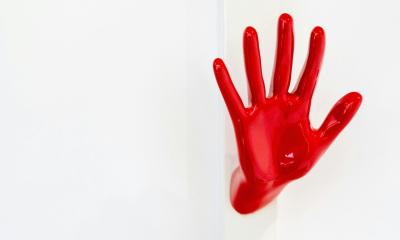Source: Shutterstock/Photo-Art-Lortie
Article • Disinfection
Why rigorous hygiene practices are vital
Nosocomial infections present enormous challenges for medical facilities, involving huge hygiene efforts from staff, on patients as well as medical and non-medical products.
At MedtecLIVE 2019, in Nuremberg, Susanne Harpel (Dipl. Ing), Deputy Head of the Institute for Hygiene and Environmental Medicine at Giessen/Marburg University Hospital, presented desirable contamination efforts during the session ‘Management of hygiene-critical surfaces in medical facilities’.
If these instructions state that the ultrasound scanner should be cleaned with “a soft cloth, lukewarm water and mild detergent”, this poses big problems
Susanne Harpel
Routine surface disinfection and targeted disinfection are both necessary in hospitals, according to Susanne Harpel. Routine disinfection is ongoing, with all surfaces being disinfected – even when no detectable contamination is present. Targeted disinfection is carried out to eradicate contamination once it has occurred. Whilst this may sound quite simple in theory, in reality the performance poses numerous challenges for those involved. ‘If you imagine a basic bed area on a hospital ward, the surfaces appear relatively manageable. But, the reality is obviously very different because there are numerous surfaces patients touch,’ Harpel pointed out.
A distinction is made between surfaces close to the patient, those further away, and those with particularly frequent hand and skin contact. The latter must be monitored particularly carefully to eliminate contamination and to reduce the infection risk they can pose. ‘Everything the patient touches is colonised by microorganisms that are potential sources of infection. Numerous studies confirm that patients spread these microorganisms around a room.’
The design of bedrooms on wards challenges surface disinfection. ‘Many hospitals want to offer patients rooms with a feel-good factor, or with a hotel character. Flooring with wood effect for instance is increasingly popular. However, there are huge differences in design which we have to deal with in daily routine,’ Harpel underlines. The flooring often has very rough surfaces or gaps where dirt accumulates, therefore it is not suitable for thorough surface disinfection with mops or other cleaning equipment.
Cleaning medical devices also presents a significant problem for hospital hygiene. Legal requirements stipulate that manufacturers must provide users with detailed descriptions for equipment cleaning, for example of ultrasound scanners. ‘If these instructions state that the ultrasound scanner should be cleaned with “a soft cloth, lukewarm water and mild detergent”, this poses big problems because the control elements of an ultrasound scanner are in frequent hand and skin contact. A mild detergent therefore won’t do; we actually need to use disinfection agents,’ Harpel explains.
Requirements
These problems result in the following requirements:
- Hygiene officers need clear information as to how a device, medical product or even hospital bedroom furnishings are to be disinfected, i.e. which disinfection agents and materials can be used and the concentrations and application times required.
- It should be possible to clean all equipment with as few cleaning agents as possible, and monitors and various control elements should not require different solutions. This could also prevent agents being mixed up, or surface damage being caused due to a disinfection agent not being suitable for a specific surface.
- As hospitals normally use wipe-down disinfection, surfaces should be designed and structured in a way that makes it possible to wipe them down, i.e. have as few corners, edges and grooves as possible. Surfaces should also be smooth and flush to ensure that no moisture can enter gaps and damage devices.
‘When it comes to disinfection agents, we would really like an all-in-one solution,’ Harpel explains. Material compatibility is important, and hand disinfection agents (especially those used by staff) must be kind to skin and mucous membranes.
- Agents should be widely effective despite short application times to ensure that (almost) all microorganisms are killed.
- Harpel pleads for a greater say in procurement committees so that potential problems can be discussed prior to the acquisition of devices or materials. ‘There must be a clear understanding how a product can be disinfected, and only when this is known should it be purchased,’ Harpel concludes.
18.09.2019











